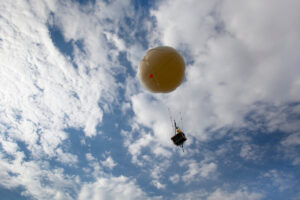Pilot training can’t protect against everything, but Airbus Helicopter is trying to change that
Every time I see a solid black line through the EMS wings on social media, my heart skips a beat. It almost always means that another helicopter has gone down and as an EMS pilot for over 10 years, it breaks my heart. I know the job is risky. I know we’re trying our best with pilot training. But still, it keeps happening. Loss of control, pilot disorientation, inadvertent IMC… the list goes on. Airbus Helicopters is trying to change all that.
The new H160 medium, twin-engine helicopter is going to be amazing! Not only does it have a new, aerodynamic design, but it also has an Automatic Flight Control System (AFCS) that promises to be a game-changer for pilots. Airbus calls the new design “ accrued pilot assistance” and its main purpose is to provide flight envelope protection (sounds just like my pilot training in the Airbus 320 at UsAirways). The goal of this protection is to help pilots stay out of trouble, or if the worst happens, to fix the problem before a loss of control leads to an incident/accident.
The pilot will always have full control over the H160 at all times, but the automation is there to reduce the human factors link that is often associated with accidents. The goal was to develop automation that is simpler and more intuitive for pilots, especially those with less experience.
Here’s how it works: the technology is also known as a “fly-through” autopilot, which means that the AFCS remains on at all times in the H160. In “hands on” mode, the pilot can make the helicopter do anything he or she wants it to do even though the autopilot is still on. But in “hands off” mode, the pilot can let go of the controls and the helicopter will maintain the same flight path and airspeed. So if the pilot is attending to other tasks, like reading a chart or setting the GPS, or inadvertently flies into IMC, he/she simply lets go of the controls to avoid the dreaded unusual attitude, or worse…
And if the pilot does become disoriented, a quick double-tap of a button on the yoke will return the helicopter to a stable, controlled position allowing the pilot to regain their bearings. It is called the “Automatic recovery mode” and I think it’s brilliant.
For Airbus, this new helicopter design is a move toward pilot-friendly thinking and pilots are taking note. From our perspective, the amount of pilot training required to safely fly this helicopter is going to be substantially reduced. And because of its safety features and advanced design, that means the likelihood of a serious incident or accident will also be substantially reduced – and that’s a great thing!










